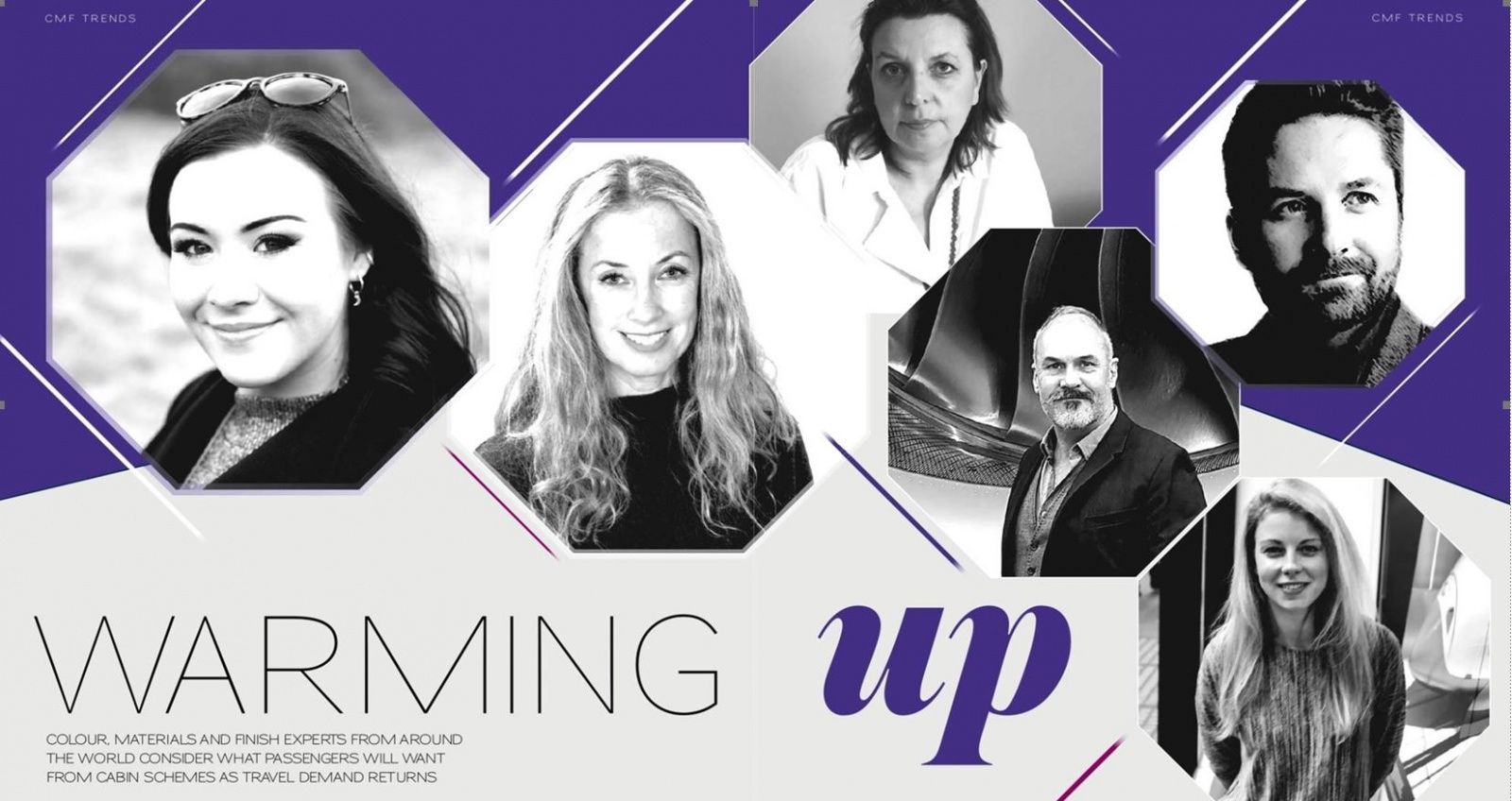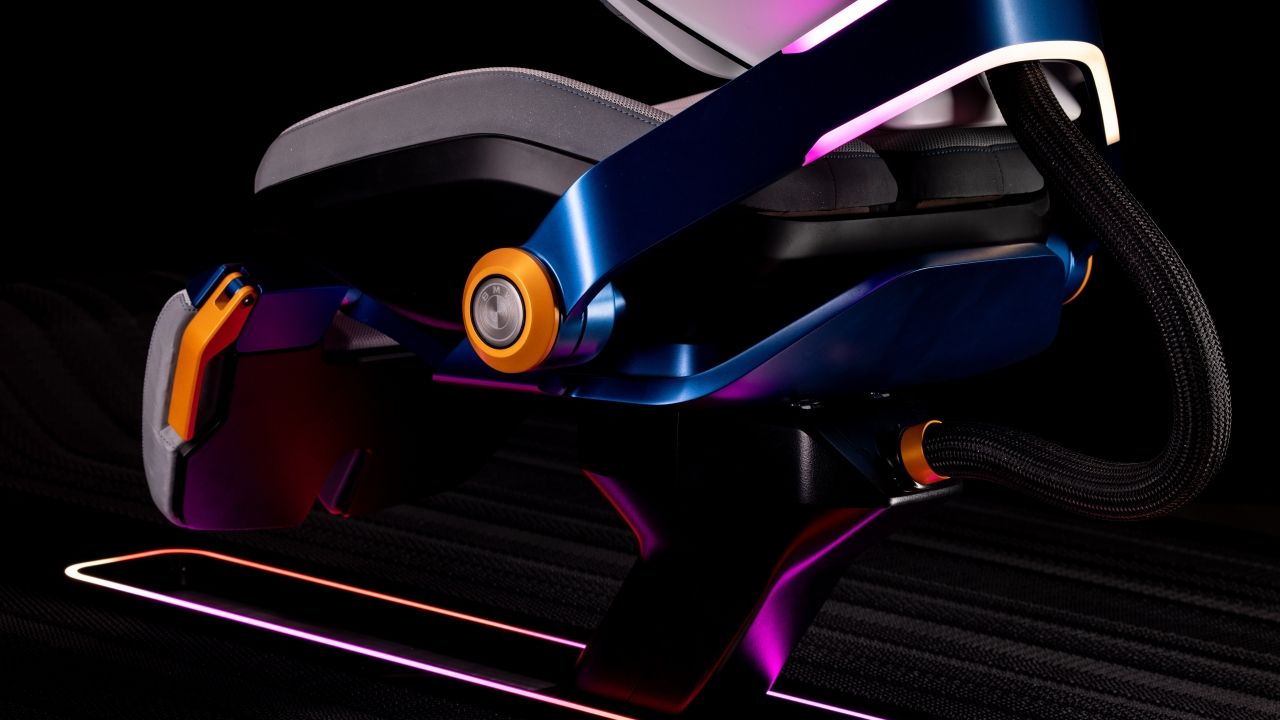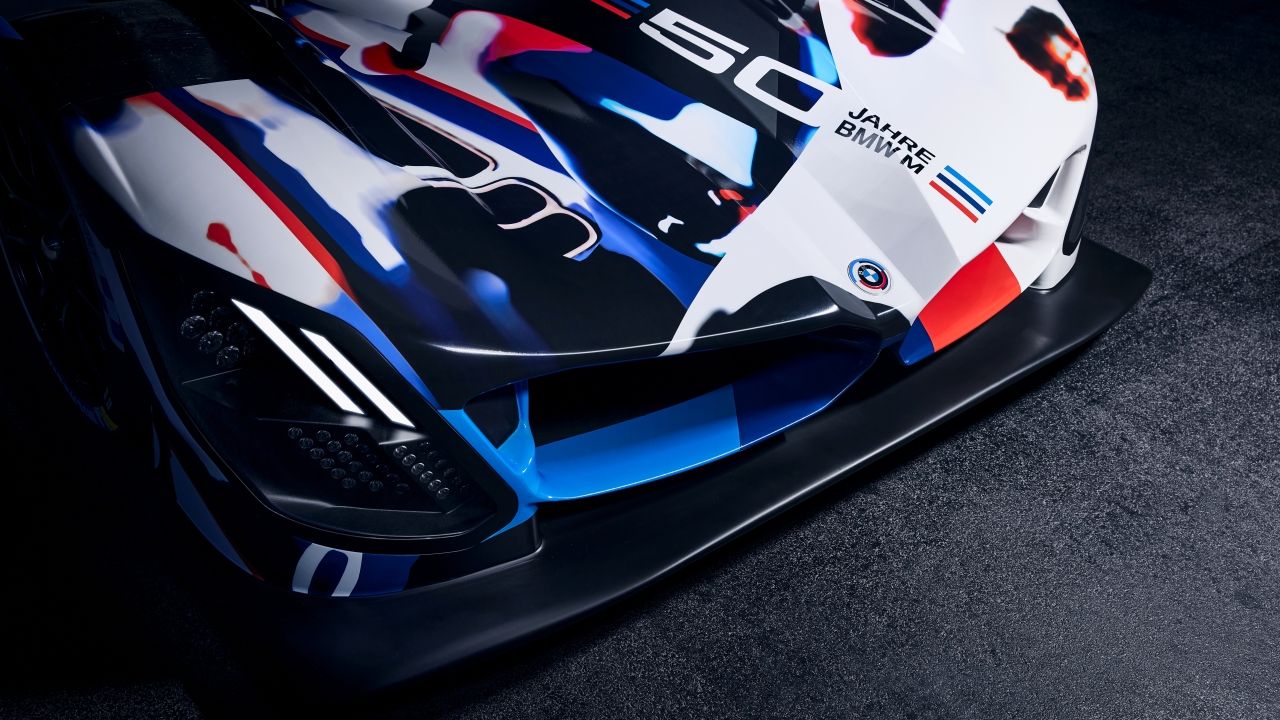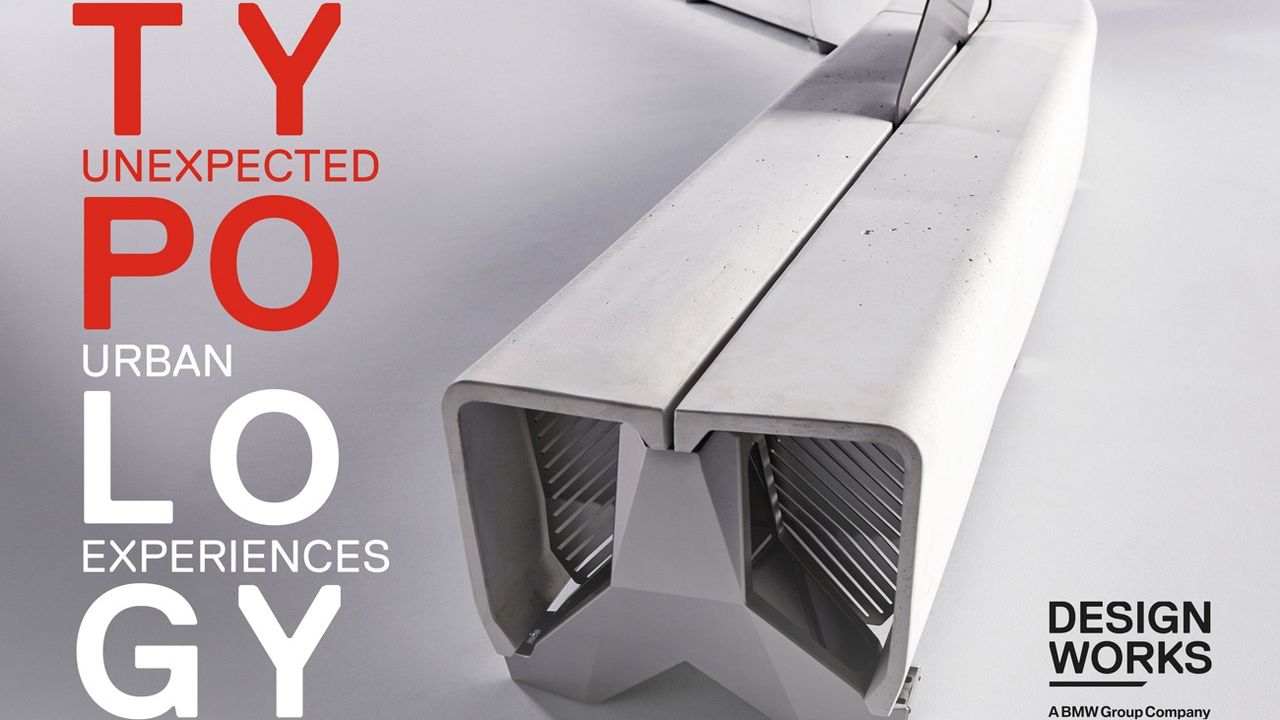Emphasizing Wellness in Interior Spaces: The Future of Embedded Tech and CMF Design

March 2021 is rapidly approaching and will mark a year since the WHO declared the novel coronavirus outbreak a global pandemic, and for those of us designing for the future, the most prevalent question is: What should things look and feel like both in and after this period of collective trauma? What will elevate our sense of comfort and safety when interacting with our surroundings?
A through-line issue and major topic of concern during the upheaval caused by COVID19 has been, and continues to be, how the experience of air travel should be changed to reflect the needs of passengers concerned with cleanliness and safety while onboard.
While it’s easy to assume that passengers might be drawn to Kubrick-esque interiors with color, material and finish that communicate the stereotypical qualities of cleanliness – cold, light colors, smooth surfaces and antibacterial materials, after taking a closer look at what actually makes us feel safe, we know this is not the best way forward.
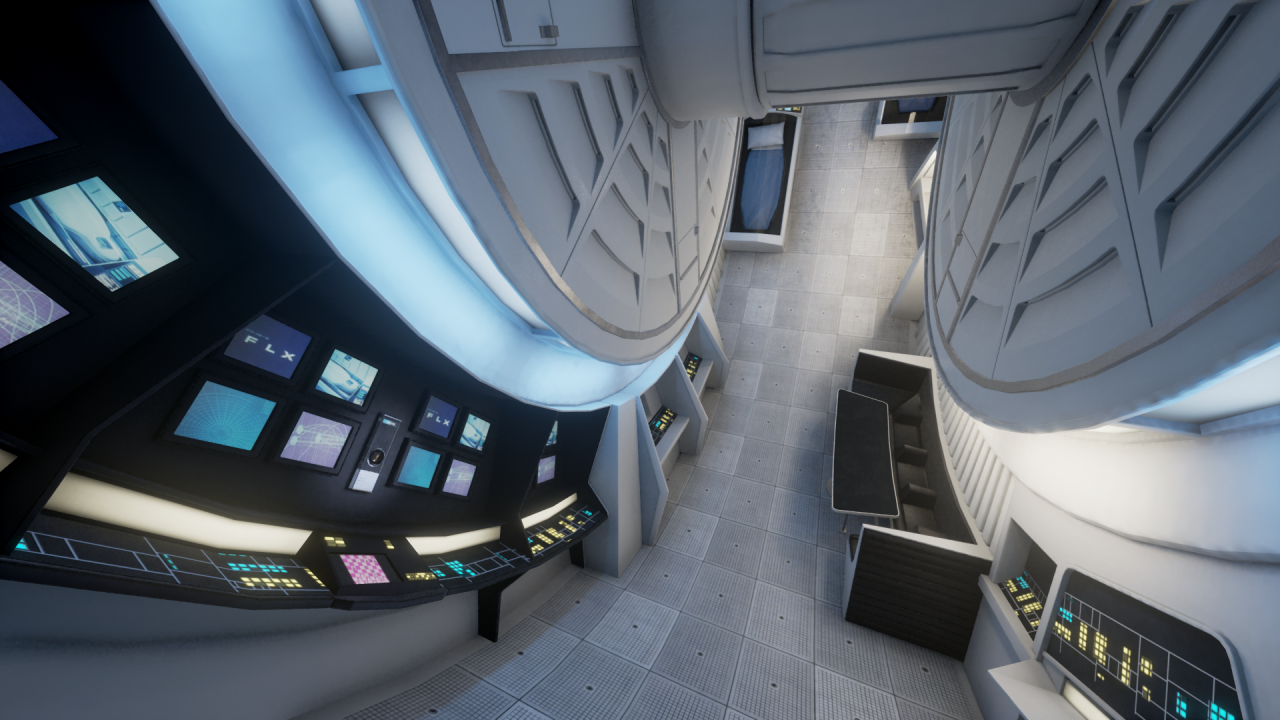
A film still of Stanley Kubrick s vision of a sterile, tech-centric, spacecraft interior from his film, 2001: A Space Odyssey.
The goal is not to turn the aircraft into a sterile surgical room, but to make it a space in which we’d actually enjoy spending time.
Innovation, technology and inorganic material may come out of a lab, but that’s not our human origin. History shows that in times of high fear and stress, we tend to gravitate back to our organic roots – seeking comfort in nature, wood surfaces, the warmth of a fire and soft knit materials.
So what exactly can we do to increase safety without succumbing to lifeless environments that merely communicate cleanliness?
We believe the answer lies in embedded, touchless technology that lives within the materials in our spaces in order to create a sense of well-being, comfort and luxury.
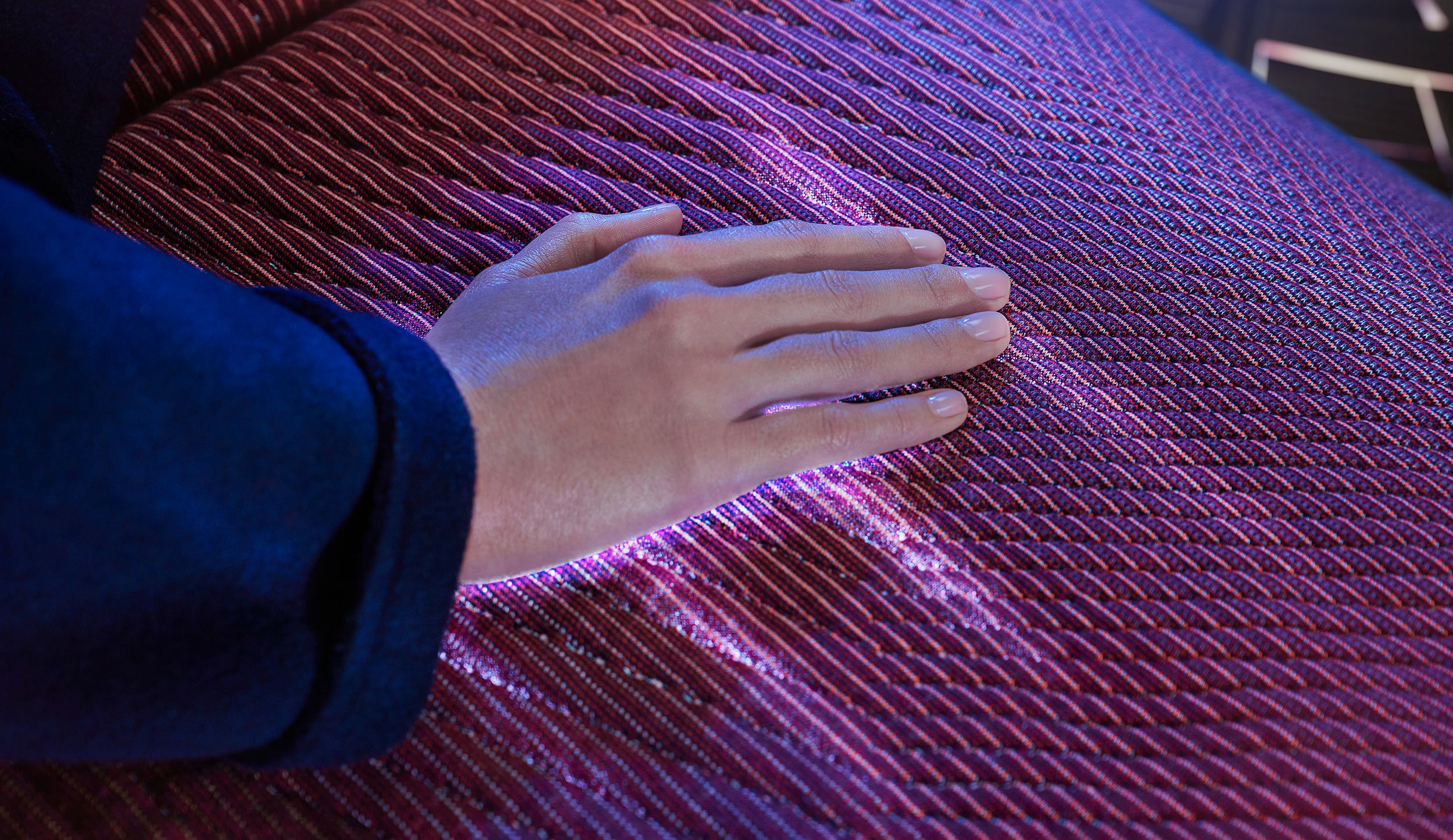
The BMW i Interaction EASE sculpture uses embedded lighting within its interior space to personify its Intelligent Personal Assistant.
To understand this on a deeper level, we recognize and examine the rapidly developing “Wellness” mega-trend.
A report from Trendwatching says that as we continue to lead highly tech-driven, fast paced lifestyles, consumers increasingly expect brands to “embed innovative health-boosting technologies into the environment around them.” The larger expectation is that these advancements will help offset negative impacts on our health and wellness as well as to create new, health-positive effects. A prime example of this concept is the Qatar Airways’ Airbus passenger plane that has an interior space designed to combat the negative effects of jet-lag. One of the ways they achieve this is through the use of LED lights that change their color temperature to mimic the sun’s glow, coinciding with passengers’ natural circadian rhythms.
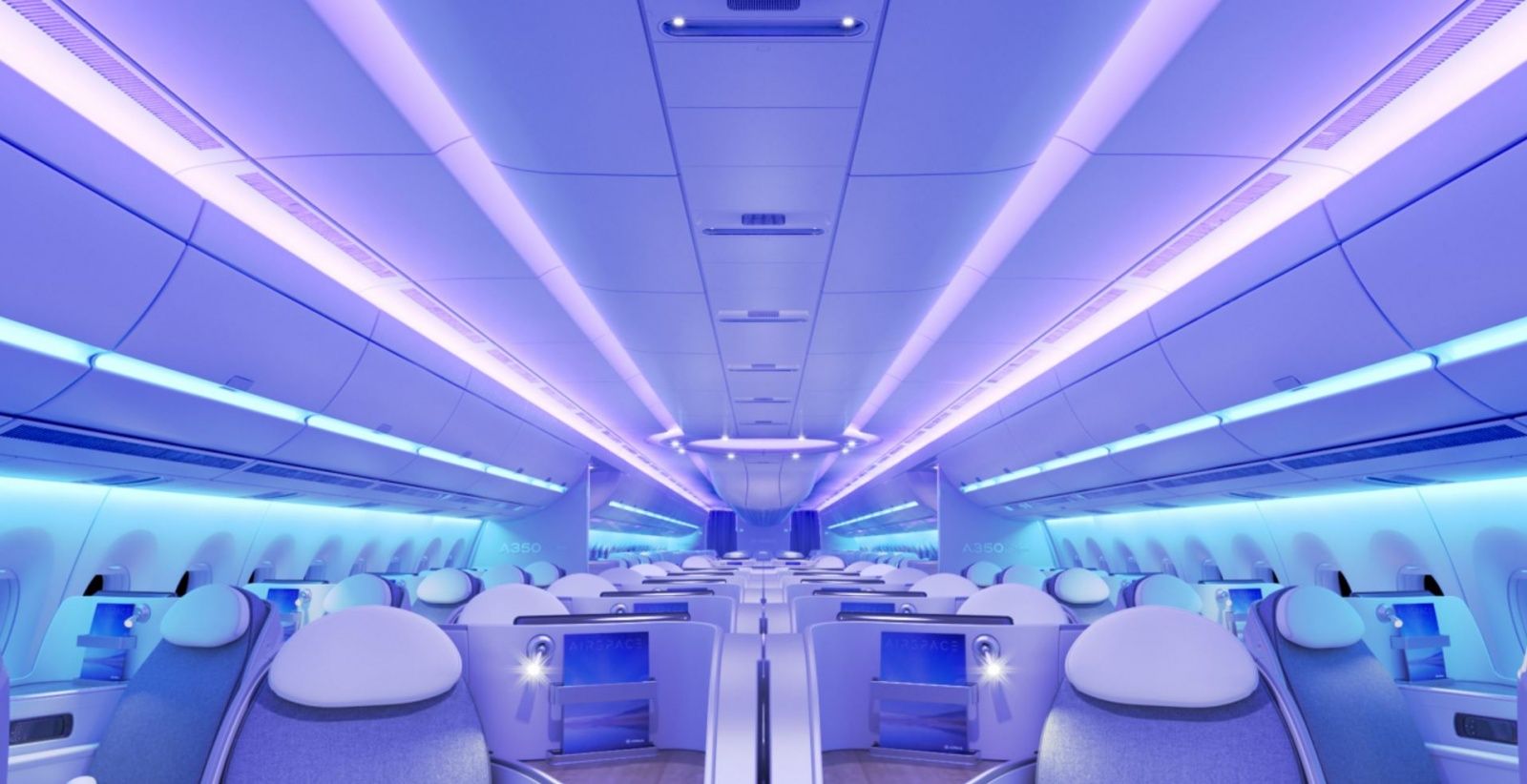
Qatar Airways’ Airbus passenger plane that has an interior space designed to combat the negative effects of jet-lag.
A sub-trend under the larger wellness umbrella is the Danish concept of “Hygge,” which, according to Psychology Today, is a term is used to describe “a quality of coziness and comfortable conviviality that engenders a feeling of contentment or well-being.” The concept is visually characterized by a lack of visible technology, soft, comfortable nooks, elements that gently activate our senses like the flickering glow of a candle or a naturally scented floral bouquet or wreath. All designed to create an engaging and soothing environment that brings us closer to our roots.
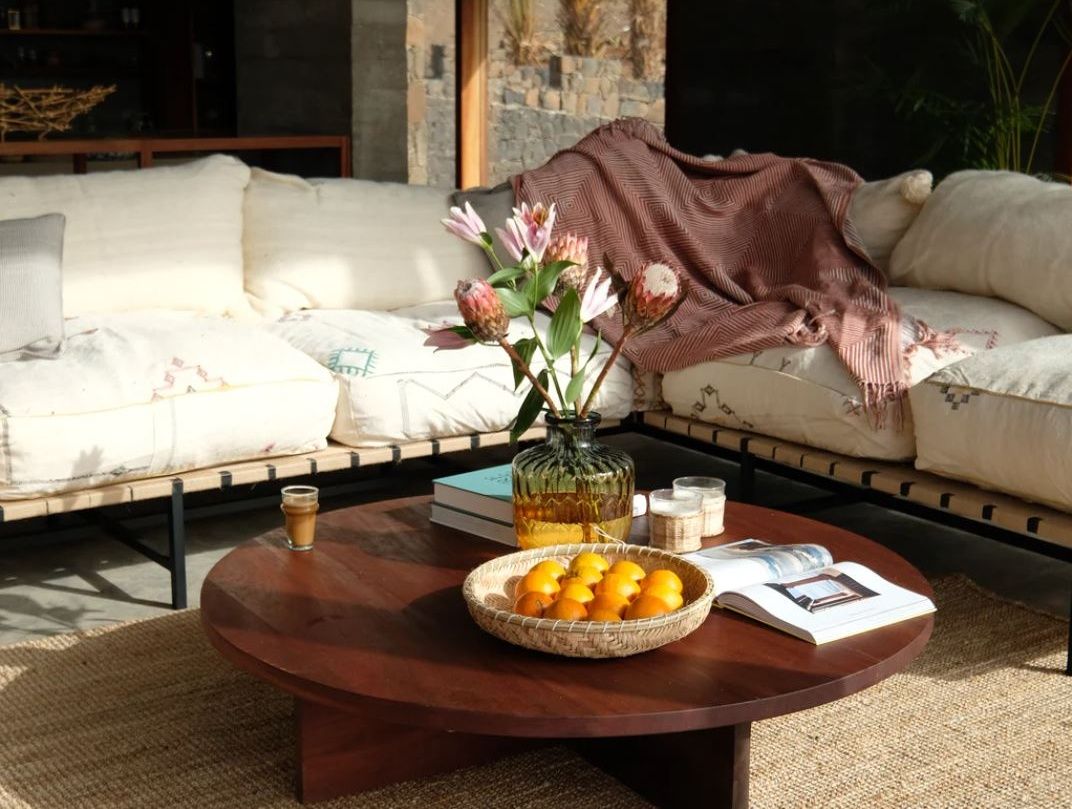
An interior space that embraces the Hygge concept through comfortable, yet natural CMF choices.
For a look inside the aircraft industry, Designworks’ Color, Material and Finish (CMF) designer, Sandy McGill, has observed the ongoing influence of private jets on commercial aviation. She says “travelers today are more focused on comfort and aesthetics than ever before.” This is believed to be a result of the transparency created by social media into the luxurious world of private aviation, which has taken major cues from revamped 5-star hotels in Aspen and second homes on Mustique – or in other words, places many people would not previously have had access to.
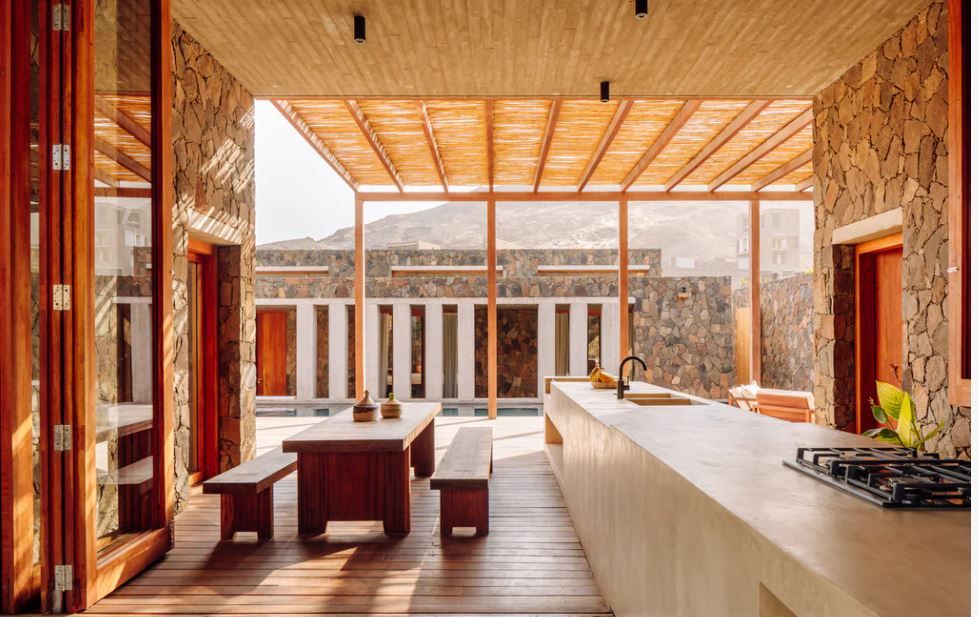
The mixed natural elements used in this interior space communicate warmth and modern design without losing a sense of humanity. This is achieved by leaning into organic materials that work in concert to create a sense of luxury as well as calm.
“These hotels and homes are no longer formulaic or dependent on location to dictate aesthetic—the common theme amongst these styles is informal, comfortable and luxurious, yet understated, materials. The primary tenets of wellness. Whimsy, in the form of ironic color or pattern, may also play a role as an ice breaker in the transient environment. A smile and a cashmere blend may be the antidote we need.”
—Sandy McGill, Lead CMF Designer, Designworks
In the present reality of COVID19, the power of environments that foster wellness become more relevant than ever.
Without the limitations of purely hard, synthetic material that was both antibacterial and anti-human, a world of color, material and finish choices opens up and enables designers to create interior environments that actually help the passenger be and feel safe not just in times of great stress and uncertainty, but all the times in-between as well.
The physical embodiment of how touchless technology can be used to promote a sense of passenger wellness exists in the BMW i Interaction EASE automotive sculpture. The EASE uses innovations in eye tracking and gesture control technology to enhance passenger experience as well as creating a safer, touch-free interaction that works in harmony with its warm, plush interior.
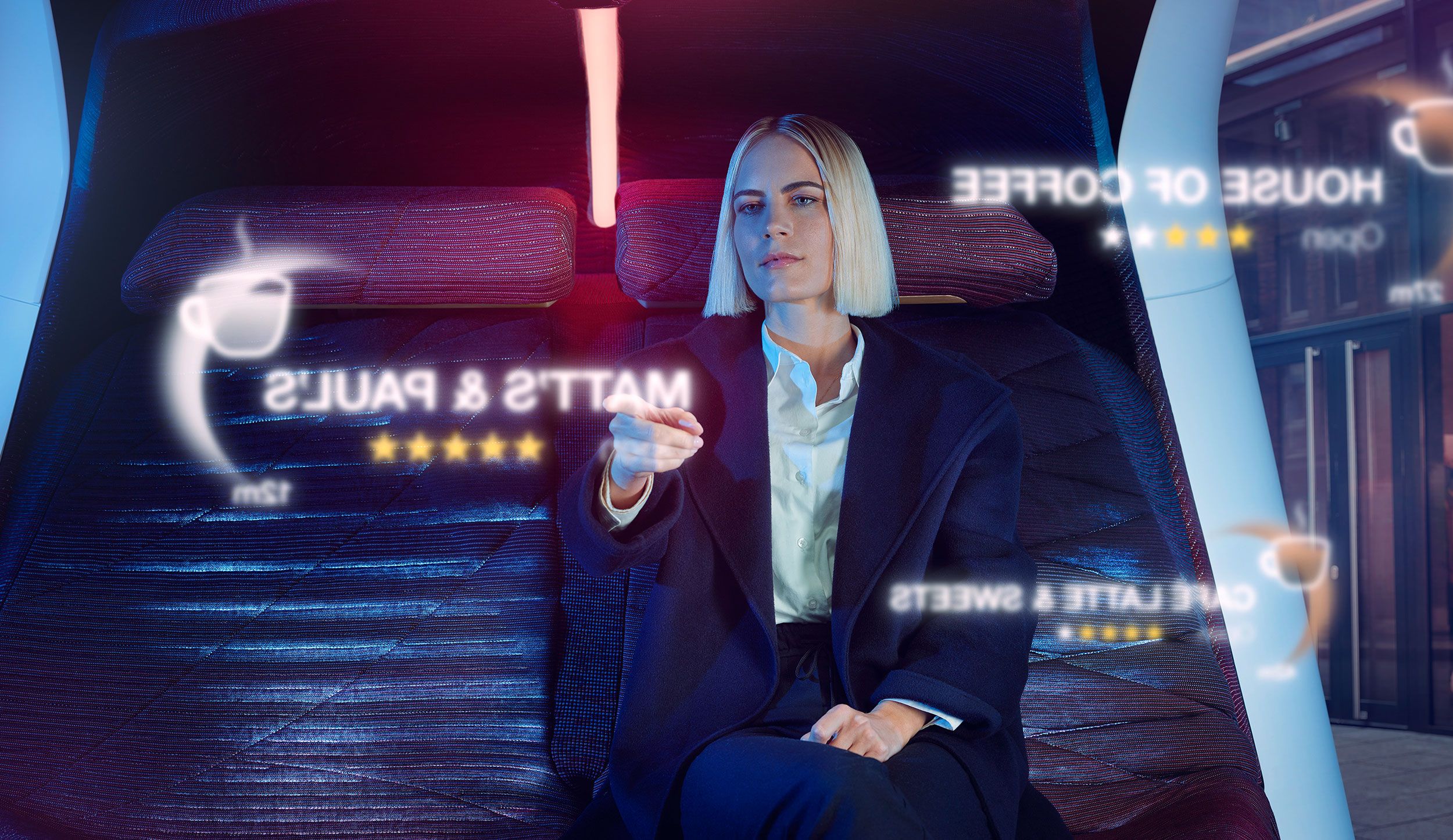
The BMW i Interaction EASE includes touchless technology and eye-tracking and illustrates the power of embedded technology
Having technology embedded within the materials of aircraft interiors – similar to the EASE sculpture and BMW Shytech concept – would enable us to go beyond the surface as a mere protection against germ transmission and into changing the relationship between passenger and surface altogether with the goal of removing the need to touch and creating a new opportunity for more enjoyable, as well as clean, travel experiences.
In order to solve concerns about the need for clean surfaces, we can look to advancements in sanitation like UV light and anti-bac fogging, which result in actual improvements in safety, without sacrificing comfortable elements that make interiors inviting.
If the aviation industry were to decide to embrace coldness as a way to curb anxiety, it is possible that the results could have a domino-like effect on other industries like hospitality and retail interiors; ultimately leaving our environments devoid of comfort, warmth, expression and in the end, feeling a lot less human.
Thinking that merely communicating cleanliness through seemingly “sterile” design choices does nothing to reflect what actually makes passengers feel comfortable and safe, and fails to address the much larger challenges of space, layout and boarding protocols that have the real power to make passengers feel at ease.
It is important to move past merely communicating safety to using design that will provide reliably safer and ultimately a lot more comfortable experiences to put the mind and body at ease while in the air.
To read other design perspectives on what passengers will want from cabin interior experiences in life both in and after COVID19, check out the latest issue of Aircraft Interiors International.
